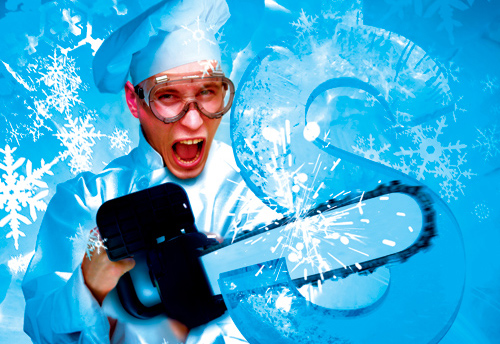"A static display is boring, live fruit or ice carvings are the way forward - people love a bit of action," Haviland said.
"With coffee breaks, rather than having the standard we can have more innovative themes or live smoothie stations. It's a fairly minimal price that can make the buffet something special for guests."
An advantage in having to think about presentation and adding value to catered events is the improvement that can be made to the product.
"Having worked in Asia for three years, I know the buffets there are spectacular so we will have to lift our game if we want to compete with what they are offering," Haviland said.
"We have to be a little bit more innovative on how we present the product."

| Advertisement |
Key ingredient
Although theatrics and live service stations are a way of adding value to a catered event, the recipe for success fails if one key ingredient is missing - communication.
"Communication is key, but it has to be defined from the outset. You have to be confident of the package and make sure you communicate clearly because the guest will be annoyed if they turn up and get something they didn't expect," Haviland said.
Catering teams need to know the budget, dietary requirements and timings of when people need to be seated in the meeting room - a catered meeting or event is, as Haviland puts it, "a race".
In an attempt to avoid miscommunication, the InterContinental team provides photographic representations of the buffets and break out sessions.
"I think photographic representation is important. It helps to sell the product and explains to the guest what they are getting for different prices," Haviland said.
"You need full photographic representations of what the room set ups and table setting buffets lighting. It covers our back and they know what they are getting. Everyone has to be on the same track."
With little sign of the rise in food prices slowing, it would seem that venues and EMCs are going to have to keep their creative hats on and keep talking to planners for the foreseeable future.
"I think the growing trend is going to be more customised and personalised," Haviland said.
"And the more informed we are, the better we can maintain the costs. I can make sure there is less wastage and I maintain my profits without adding costs to the client," he concluded.
Instead of a table loaded with sandwiches, ask for a live sandwich station, where clients can order what they want
Provide fresh, gluten-free, rice paper and organic bread options to cater to varying client tastes
Provide a range of fillings and freshly prepared salads
Think of your client's needs. If it is a breakout session you do not want to keep them waiting when they have to return to the meeting









 Search our database of more than 2,700 industry companies
Search our database of more than 2,700 industry companies









